The little cyclops devices that sit behind rear view mirrors all duel in a wildly competitive market. That’s great for prices, especially at the budget end of things, but it makes deciding what dash cam to get somewhat of a chore.
Amazon link without ID in link
To make this easier, we have covered the best budget dash cams, dual dash cams, dash cams with Wi-Fi, and overall best dash cams. But here we focus on just one: the futuristically sounding Nexar Beam.
Nexar’s Beam dashcam joins a very crowded market, and it does so as a new brand in the UK with a relatively high price for an unknown quantity. But thanks to a fairly comprehensive yet unusual package of software and camera however, it could be exactly the right choice for your car and driving.
Just so you know, whilst we may receive a commission or other compensation from the links on this page, we never allow this to influence product selections – read why you should trust us.
At a glance
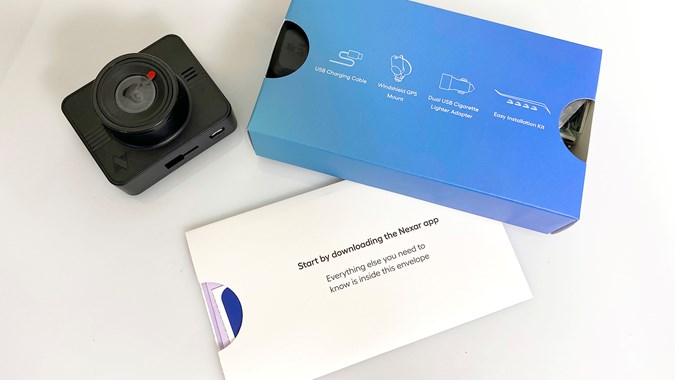
Unboxing the Beam you are presented with a compact dash cam that sits in the palm of an adult hand with lots of space to spare. You also notice there is no screen on the back. Instead, there are two LEDs, one representing power and the other representing Wi-Fi connection.
There’s a power button on the left hand side too. Its placement is a giveaway clue this dash cam is from an American firm that naturally designs its dash cams for left hand drive cars. It’s a very minor niggle for drivers in right hand drive cars, but given it’s the only button on the Beam, it’s not such a big deal.
Connection to the mount is just a plastic click, but there’s a flying cable to plug in. You can leave the windscreen mount in place, hardwire the dash cam to the car and still remove the camera without disturbing the positioning. The mount also carries the GPS receiver.
The cameria itself is 2.0-megapixels and records in Full HD 1080p at 30fps, which is the minimum expectations for any dash cam these days. While the Beam records at this resolution, it uploads to the Nexar cloud storage in 720p when you’re driving and have the app connected, but it is possible to download a Full HD clip from the camera with the Nexar app and then share/save/report it. Unlike some Wi-Fi enabled dash cams, the it doesn’t seem to be possible to connect the Beam to an in-car hotspot, so it’s easier to think of the Beam as an extension of your smartphone and work with it that way.
With the included 32GB card the Beam stores 4.5 hours of footage in a continuous roll of clips.
Installing the Nexar Beam
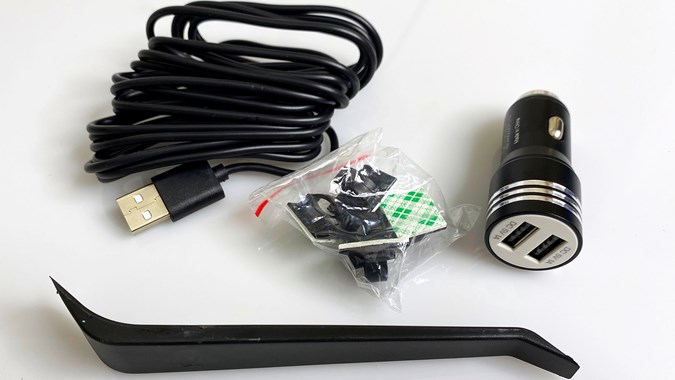
Unlike some WiFi enabled cameras it doesn’t seem to be possible to connect it to an in-car hotspot, so it’s easier to think of the Beam as an extension of your smartphone and work with it that way.
In a excellent move, Nexar provide a 12V plug with dual USB ports. It’s a simple but extremely useful touch. You also get a long USB cable, a set of stick-on clips for it, and a plastic pry tool to hide said cable in the headlining around the edge of the windcreen. But if you have a car with a USB power port near the rear view mirror then you can just use a short Mini-USB cable. Using this slightly larger, more robust connector is a neat touch, you’ll have no problem finding hardwiring kits and adapters. Fitment is with a suction cup that secures by rotating the mount 90 degrees – no stickers and very easy to use.
Once the dash cam is in place, you then must turn to the Nexar app for everything else. You need the app right from the start because you’re relying on it to position the camera as well as sign up for the cloud storage.
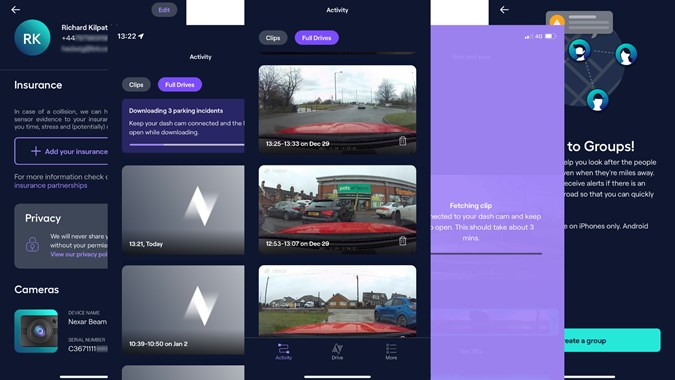
It’s available on both iPhone/iOS and Android. On iPhone it includes Siri integration, which goes some way to compensating for the lack of buttons and controls on the dashcam, For example, you can trigger saving or uploading a clip with a voice command. It’s more focused than some rivals’ attempts to include Alexa (such as Nextbase), and it works well.
Once installed the Beam’s lack of screen and bright lights is very welcome, being small enough to hide behind most mirrors and requiring no pokes or prods from the driver, it doesn’t obscure the view at all.
Performance and footage
In daytime conditions the Nexar Beam is excellent. Recorded footage is clear, with number plates legible and detailed a couple of cars ahead in typical traffic. But the Beam does suffer from being blinded in low sun, without a polariser there are conditions where details are blown out.
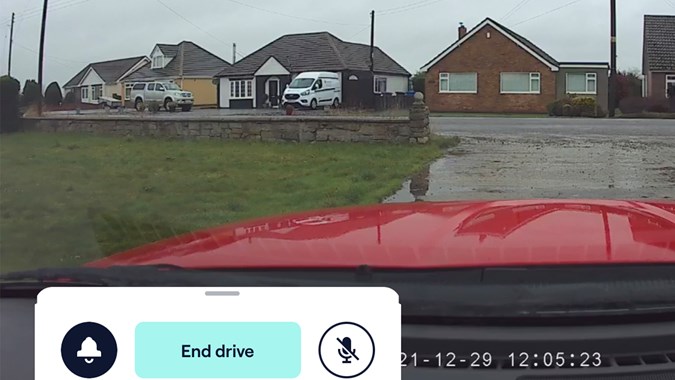
It senses movements and assigns clips with notes for ‘Hard Braking’ and such, but doesn’t appear to apply any AI-type tools to detect cars that are too close. In-car audio is recorded all the time, though you can strip it from downloaded clips, and it’s good enough to hear the noisy wheel bearing, for example.
If you see something you want to save, you either have to remember when it was since the camera is recording all the time, or use the app to save the clip (hence the voice control is essential). Unless you’re undertaking an epic drive, the 4.5 hours of footage on the card should be enough; you can always upgrade the standard 32GB card up to a 256GB card, but it must be a fast one (class 10). The voice control and app lets you send a clip directly to a contact, which could be useful if lost or feeling anxious about the behaviour of a vehicle near you.
Night footage could be better. Although the camera performs quite well with low noise, it just doesn’t have the clarity and dynamic range to cope with headlight glare, so the only details and numberplates you’re going to save away from towns and cities are those of the car in front. In urban areas it copes well with streetlights, so footage from well-lit junctions and roundabouts is still useful.
There is a parking mode, which is activated when the camera detects the car is off and is activated by physical movement of the car, such as a bump or the door being opened. The Beam’s battery is a 200mAh unit.
Given the camera only records the view forward, it’s only really of use if someone bumps into the front of your car. As such, there is immediately a strong argument for reversing into parking spaces.
Verdict
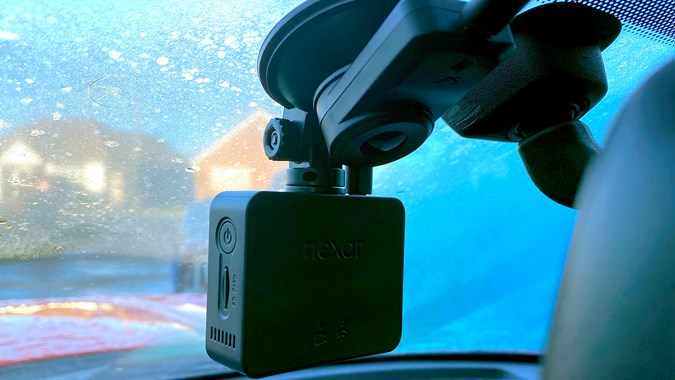
The Nexar Beam is a great little camera for drivers who want no-nonsense recording but also access from a smartphone. It doesn’t attempt to do too much with the software, which leaves you wondering what potential there is for future models (Nexar are developing a 4G connected camera, where the cloud storage and parking mode would be more effective, but it won’t be as affordable).
We particularly liked the Beam’s compact size and how easy it was to hide it behind a rear view mirror. Its other plus points are how it allows you to have an uncluttered dashboard and the trouble-free operation of the parking mode.
Setup and installation is simple and you can use it without all the app features. Fit, forget and then if there is an incident you need to save. Just pop the memory card out and check the HD footage directly. Multiple users can connect to the camera, so a passenger can view and share live footage if needed.
As a relatively new brand in the UK, Nexar still has a way to go forming insurance partnerships and connecting to additional services. But the Beam is worth buying for the simplicity on offer and clear, crisp daytime video. But if you do a lot of night driving, you may want to look elsewhere.
Nexar Beam
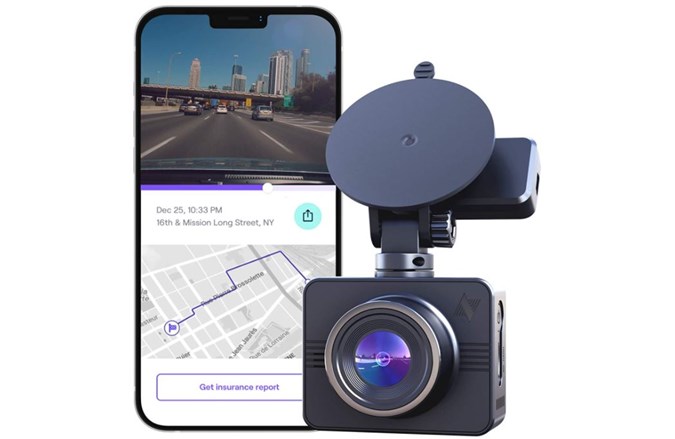
Price: £104.95 | VIEW OFFER
The best memory card for your dash cam?
The crucial thing here is that you need to find out what maximum memory card capacity your dash cam can take. For some this might be 64GB, for others it might be 256GB.
We tend to suggest that 64GB is good, especially for 1080p. If you’ve got a dash cam that records in 4K like the excellent Nextabse 622GW, then you may want to consider more.
The other factor is the ‘speed’ of the memory card. That is, how fast a recording can be ‘written’ onto the memory card. This is important because it varies widely – too slow and recordings can suffer from something called frame drop where frames of the recording are lost because the memory card couldn’t keep up. The result is patchy footage.
For dash cams with Full HD 1080p, you will want at least a 10MB/sec write speed (i.e. class 10) and for 4K you will want to consider at least 30MB/sec (i.e. U3 or V30). Our overall recommended microSD is below:
SanDisk High Endurance 64GB
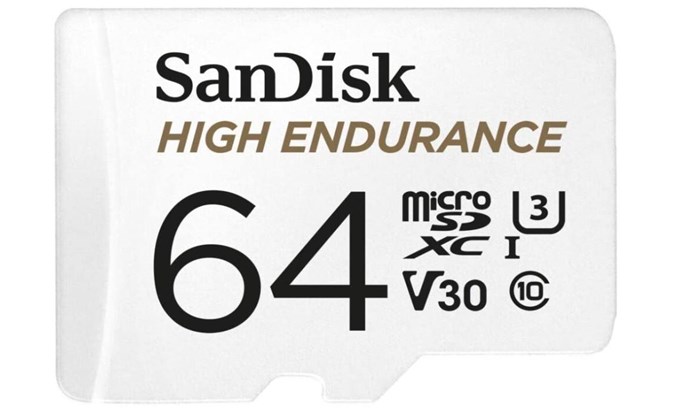
Price: £11.79 | VIEW OFFER
Read next:
Dash cam review: Nextbase 522GW vs 622GW
The best travel torches for your car glovebox
The best aftermarket sat navs picked by the Parkers experts
Sign up to the Parkers Newsletter to keep up to date with more of the latest reviews, news, and recommendations from the Parkers team.
Just so you know, we may receive a commission or other compensation from the links on this website - read why you should trust us.









